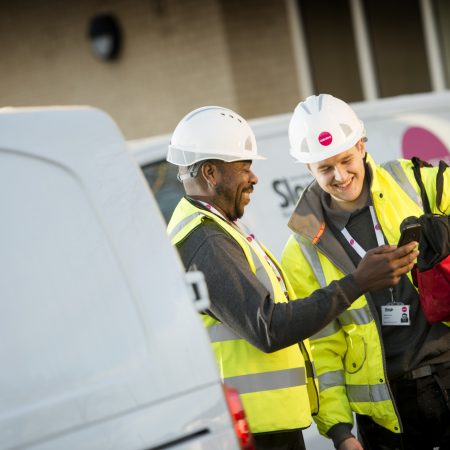How Digitally and Mobile-Enabled Construction Cracks the Productivity Puzzle
It’s generally accepted that to make a meaningful impact on productivity levels the construction industry must be more digitally and mobile technology-enabled. Through technology, we can sweep away the old inefficient methods of communication that lead to delays, misunderstandings, assumptions and information gaps. These, in turn, lead to poor quality and stagnant productivity.
That’s fine in principle but what does it mean in practice? What would a fully mobile-enabled construction project look like, and how close are we to achieving it?
The Digital Construction Vision
First of all, the project has to be digitally-enabled. It is underpinned by a common data environment, which means there is a single repository for all project documentation. All data and information is in a format that is accessible to all partners and everyone uses the same protocols for naming, saving and organising files.
There’s also remote collaboration between all project partners from an early stage. The customer, designers, architects, contractors, specialist subcontractors and M&E provider can all access BIM data, contribute to designing optimal project solutions, and become familiar with project details and objectives before construction begins.
During the project progress updates are shared automatically. Critical updates are flagged to the organisations that will be most affected and collaborative solutions are found if progress starts to go off track.
Mobile-Enabled Construction
Possibly the biggest difference is on site. Here, contractor and supply chain teams have access to detailed design information on a mobile device. This is one of the key areas that wouldn’t have been possible a few years ago.
Project updates, safety checks and compliance data is instantly uploaded and shared as tasks are completed. It’s also possible to share real-time information, photos and videos with remote specialists so that technical issues can be resolved instantly, based on accurate ‘live’ data and without operatives having to leave the site.
Some of this is already happening. It’s delivering efficiencies and breaking down organizational silos across multiple projects. The challenge is to step up the pace of change and make this way of working the norm.
People Are Not the Problem
There’s probably an inaccurate assumption that a ‘traditional’ construction workforce will find it hard to adapt to mobile working. That may be true for some but most people are becoming accustomed to using mobile technology to communicate with friends, buy things, pay bills, book holidays and much more.
Perhaps it isn’t the obstacle that many assume. Our experience is that if you make tools easy and intuitive, people are happy to use mobile technology and quickly see the benefits.
Take a look at how we have utilised BIM and Mobile Data Sharing in our case studies.

